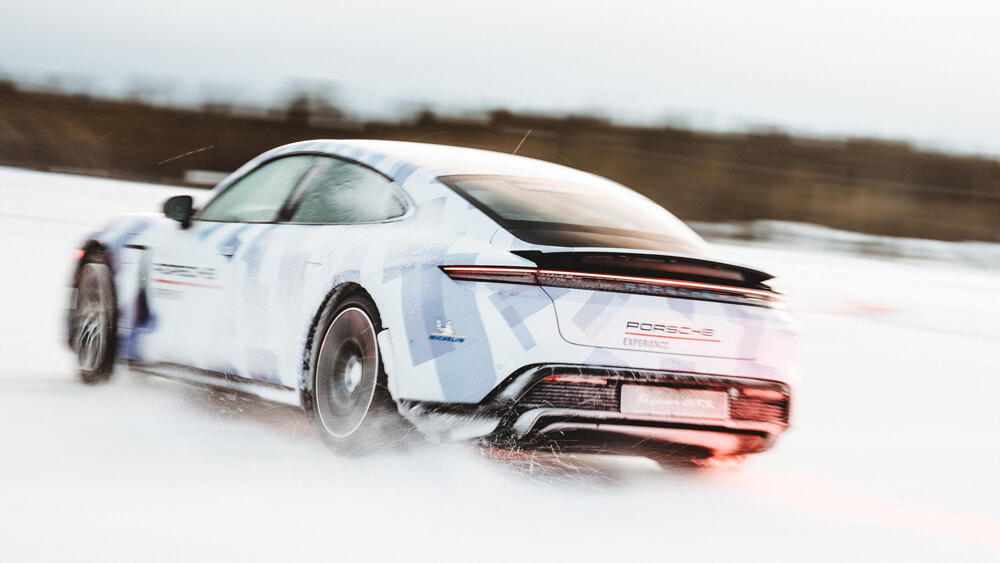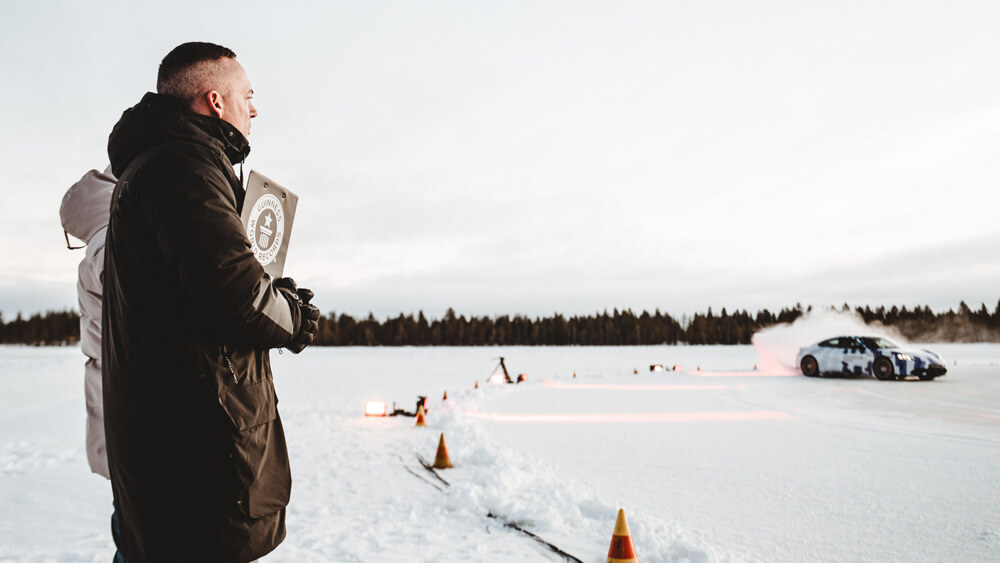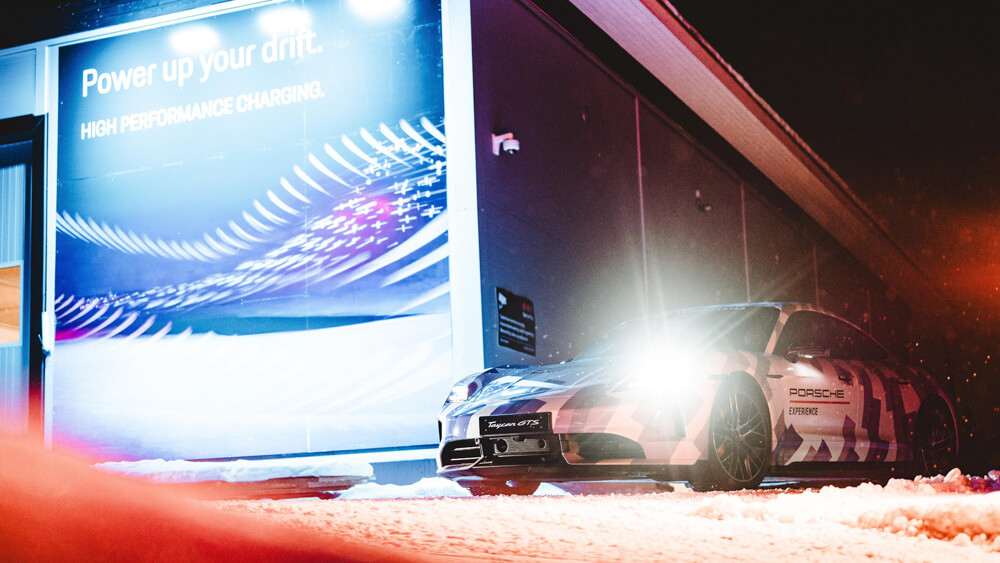Somewhere beyond the Arctic Circle, while most of us were settling into our January routines, Porsche instructor Jens Richter was busy rewriting the record books. Through swirling snow and on treacherous ice, he piloted a Taycan GTS through an astounding 132 continuous laps of controlled oversteer, covering 17.503 kilometres in 46 minutes of precise sideways motion.

The achievement marks the fourth Guinness World Record for Porsche’s flagship electric sports car, firmly cementing its position as not just a technological tour de force, but a proper driver’s car capable of extraordinary feats.
The perfect drift
Creating the perfect conditions for such an ambitious record attempt required military-grade precision. The Porsche Experience team carved out a 59-metre diameter drift circle on the frozen grounds of their Arctic Center in Levi, Finland – a facility situated 150 kilometres north of the Arctic Circle. The chosen weapon, a standard Taycan GTS, wore commercially available Michelin tyres fitted with modest one-millimetre spikes – hardly the sort of excessive modification one might expect for such an extreme endeavour.

The first attempt proved challenging, with Richter forced to abort after 11 kilometres as the ice surface deteriorated more rapidly than anticipated under the Taycan’s continuous lateral load. Yet true to Porsche’s philosophy of learning and adapting, the team regrouped, switched to shorter spikes, and waited for falling temperatures to create more favourable conditions.
Technical prowess meets human skill
What makes this achievement particularly remarkable lies in its execution. The record-breaking run relied solely on throttle and steering inputs, showcasing both the Taycan’s refined chassis control and Richter’s exceptional skill. A professional GPS measuring device recorded every steering movement, throttle application, and G-force, providing empirical proof of this masterclass in controlled chaos.

The previous record of 14.809 kilometres now seems almost modest by comparison. This new benchmark demonstrates how far electric vehicle technology has evolved, particularly in terms of power delivery and chassis control. The Taycan GTS proved that even with all-wheel drive, it could maintain the delicate balance required for extended drift manoeuvres.
Legacy of excellence
The Taycan’s latest achievement joins an impressive list of world records. These include conquering the highest altitude change by an electric car along the Xinjiang-Tibet route (5,573 metres), setting the indoor speed record of 165.1 km/h in New Orleans, and completing 210 continuous drift laps at the Porsche Experience Center Hockenheimring.

These accomplishments showcase the versatility of Porsche’s electric platform, from high-altitude endurance to low-traction mastery. The records serve as testament to the marque’s successful transition into the electric era while maintaining its core driving dynamics DNA.
Arctic proving ground
The Porsche Arctic Center, spanning 300,000 square metres, has served as the ultimate winter testing facility since 2014. Each year, over 1,500 enthusiasts brave the cold to enhance their driving skills across four progressive training levels: Discover, Learn, Boost, and Race.

For 2025, renowned Formula 1 circuit designer Hermann Tilke has completely renovated the facility, ensuring it remains at the cutting edge of driver development. This combination of world-class facilities and extreme conditions provides the perfect stage for pushing both human and machine to their absolute limits.



